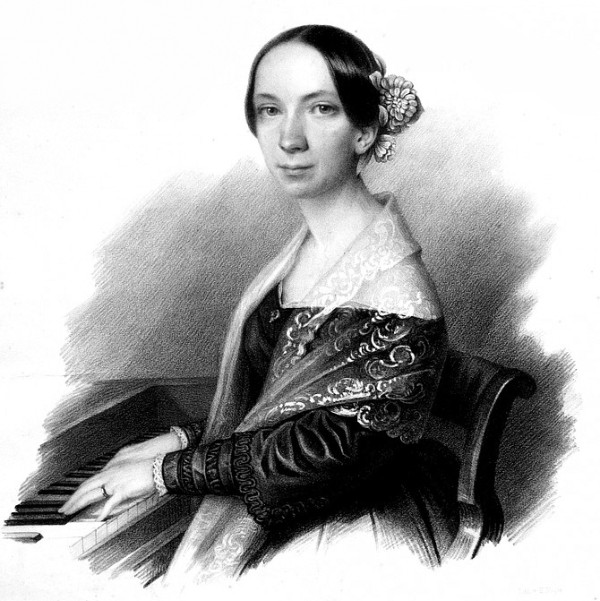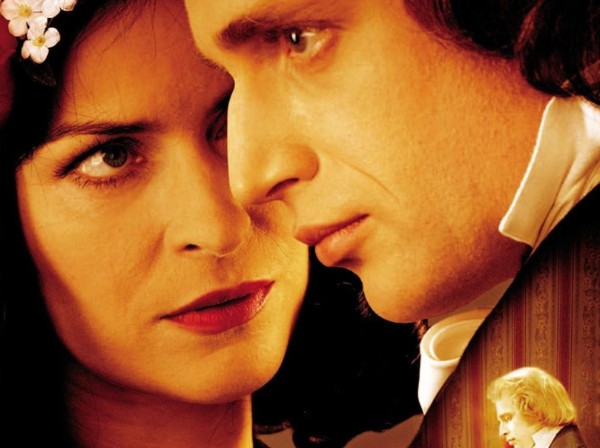It’s almost 2025, and I think everybody should welcome the new year with some sparkling champagne; musical champagne that is! Personally, I think there is nothing better for musical bubbly than the New Year’s Concert with the Vienna Philharmonic Orchestra. Every year on January 1st, this most anticipated cultural event of the year takes place in Vienna, and it blends tradition, elegance, and the sheer joy of music.
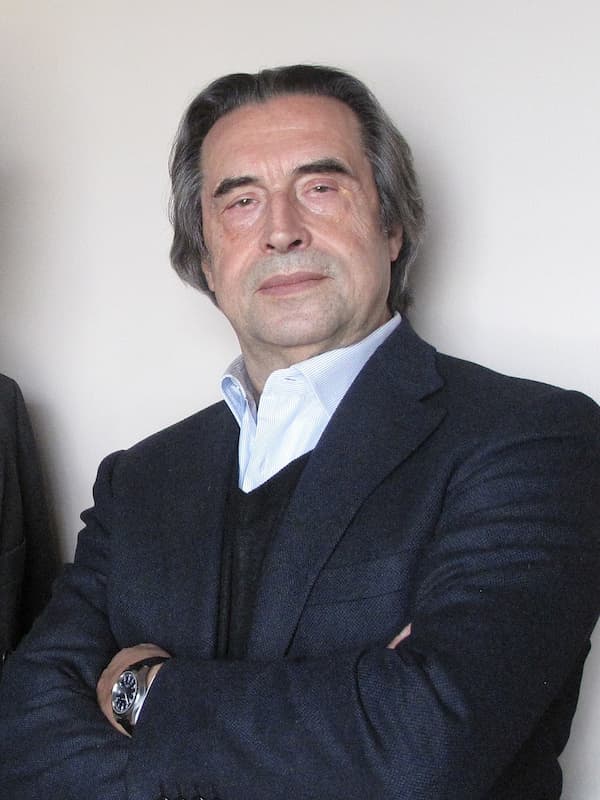
Ricardo Muti
It’s always helpful that the New Year’s Concert is performed in the Golden Hall of the Vienna Musikverein. With its gleaming chandeliers and gilded walls, it is a picture of opulence, and it almost feels like stepping into a fairytale.
Vienna Philharmonic New Year’s Concert 2023 (Excerpt)
Everybody is dressed for the occasion, bringing a sense of sophistication and glamour to the beginning of the new year. But it’s more than just an event; it unites people across different cultures with a broadcast that attracts millions of viewers around the world. And then there is the music, a mix of famous waltzes, polkas, and marches composed by the Strauss family and contemporaries.
Johann Strauss II: “An der schönen blauen Donau,” Op. 314
The programme always opens with the sparkling “Blue Danube Waltz,” and concludes with the lively “Radetzky March.” Musical selections change from year to year, as do conductors. However, some conductors are invited to make repeat appearances, like Ricardo Muti. In fact, he conducts the New Year’s Concert for the seventh time in 2025. Shall we have a little pre-sampler of the musical goodies on offer?
Johann Strauss I: “Freiheits-March,” Op. 226
March of Freedom
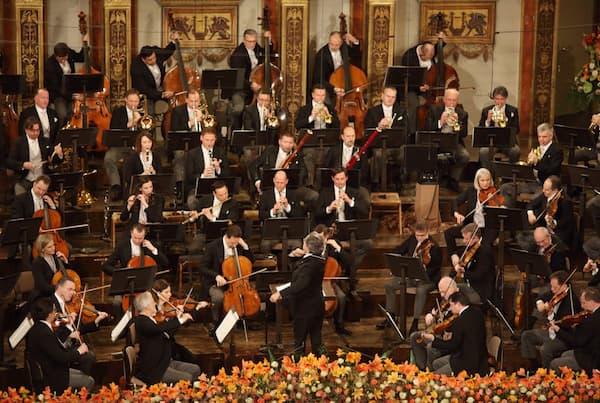
Vienna Philharmonic New Year’s Concert 2024 © ORF – Wiener Philharmoniker / Dieter Nagl
The “March of Freedom” might not be among Johann Strauss’ most famous compositions, but it represents an interesting intersection of music and politics. This lively and triumphant march dates from 1848, a time of political revolutions across Europe. The Revolutions of 1848 demanded more liberal political reforms, and people were looking for greater freedom, democratic changes, and national independence.
With freedom and change in the air, Strauss wrote this piece to capture the spirit of those exciting, rebellious times in Vienna. It’s a military-style march with a strong, bold rhythm, full of energy and optimism—perfect for celebrating liberty and freedom.
It’s a little historical gem, showing that Strauss, mainly known for his elegant dance tunes, could also tap into the revolutionary vibes of his era. With half the world’s population unable to freely speak their mind in 2024, the “March of Freedom” is a powerful and necessary symbol to start the new year.
Johann Strauss II: “Demolirer-Polka,” Op. 269 (Slovak State Philharmonic Orchestra, Košice; Alfred Walter, cond.)
Demolition-Men Polka
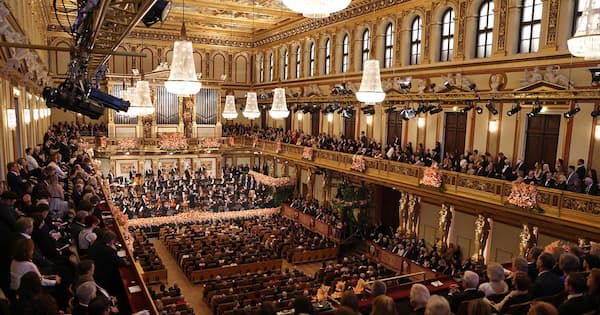
© ORF – Wiener Philharmoniker / Dieter Nagl
A good many compositions by the Strauss family chronicle very specific events in the history of the Austrian capital. The Austrian Emperor Franz Josef I decreed on 20 December 1857 that the city limits of Vienna would be extended. That meant that the old city walls surrounding the inner city had to be demolished.
To get the task done, Vienna recruited gangs of demolition men, the “Demolirer” from the provinces of Bohemia, Moravia, and Croatia. Armed with shovels and pickaxes, they removed the division between the city centre and its suburbs forever. In place of the medieval fortifications, they constructed a magnificently landscaped circular boulevard known today as the “Ring.”
The Demolierer-Polka is typical of Strauss’s style for smaller, lighter orchestral pieces. It features lively rhythms, a sense of fun, and an exuberant use of brass and strings. Though not as famous as some of his other compositions, the Demolirer-Polka showcases Strauss’s versatility as a composer by writing an entertaining and delightful dance.
Johann Strauss II: Der Zigeunerbaron, “Overture”
The Gypsy Baron
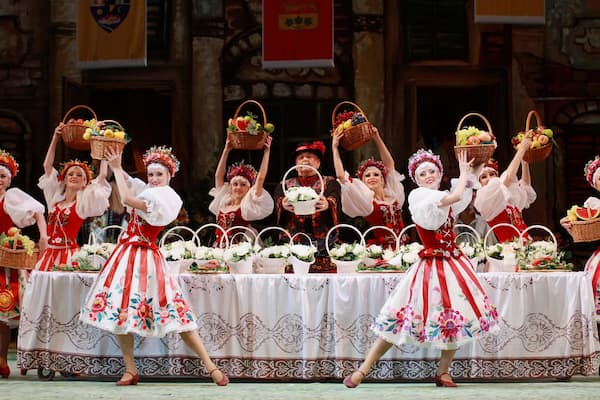
Scene from the Gypsy Baron
The operetta The Gypsy Baron was one of Johann Strauss II most successful works for the stage. It first played in Vienna in 1885 and just one year later conquered Broadway in the United States. The story is set in Hungary and prominently features the character of “Barinkay.” He is a nobleman, initially unaware of his aristocratic heritage.
He falls in love with “Saffi,” a beautiful Romani woman. There is plenty of deception, mistaken identities, and social clashes, but as the story unfolds, Barinkay discovers his noble roots and transforms into the “Gypsy Baron.” The operetta explores themes of class and social conventions while keeping things light and entertaining.
The music for The Gypsy Baron is richly orchestrated and features sweeping waltzes, marches, and lively dances. It effortlessly moves from playful lightness to majestic grandeur, reflecting lighter comedic moments and deeper romantic themes. The wonderful overture is a tasty Austro-Hungarian morsel featuring many of the musical highlights of the operetta.
Johann Strauss II: “Accelerationen Walzer,” Op. 234
Acceleration Waltz
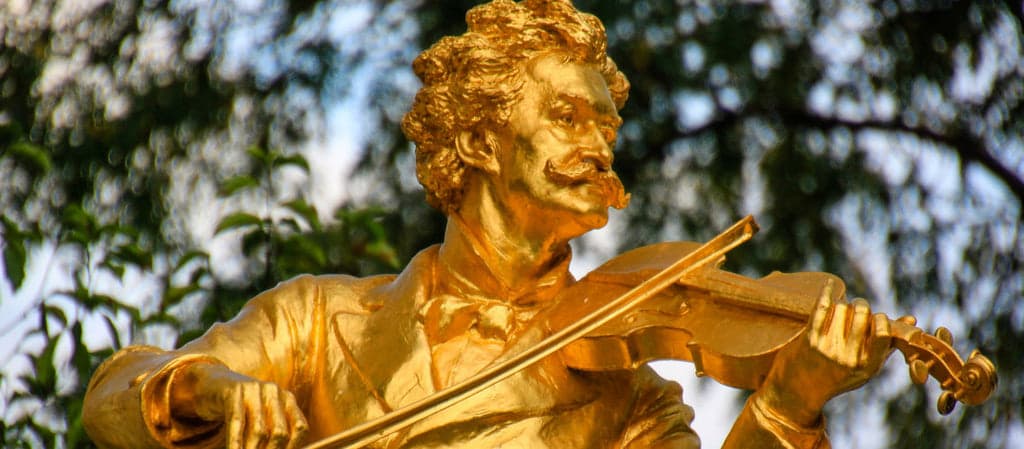
Statue of Johann Strauss Jr.
Composed when Johann Strauss II was at the peak of his career in Vienna, the “Acceleration Waltz” exudes a light-hearted and festive atmosphere. Like many of Strauss’ waltzes, it features his signature lush orchestration with sweeping strings, lively woodwinds, and bright brass. One thing for sure, it is an exhilarating listening experience.
While Strauss was composing works that would go on to define the Viennese waltz genre, he also experimented with different styles and structures. In the “Acceleration Waltz”, he pushes the boundaries of the traditional waltz by incorporating a gradual increase in tempo.
Initially, the music is quite danceable, and it is gracefully flowing. Yet, as the piece progresses, the tempo gradually accelerates, and it becomes a challenge for the performers and the listeners to keep pace with the ever-increasing speed. As the piece builds in speed and intensity, the music evokes a sense of growing excitement and energy. It is sure to keep listeners engaged and entertained.
Josef Hellmesberger Jr.: Das Veilchenmädchen, “Fidele Bruder-Marsch” (Czech Chamber Philharmonic Orchestra, Pardubice; John Georgiadis, cond.)
Faithful Brothers
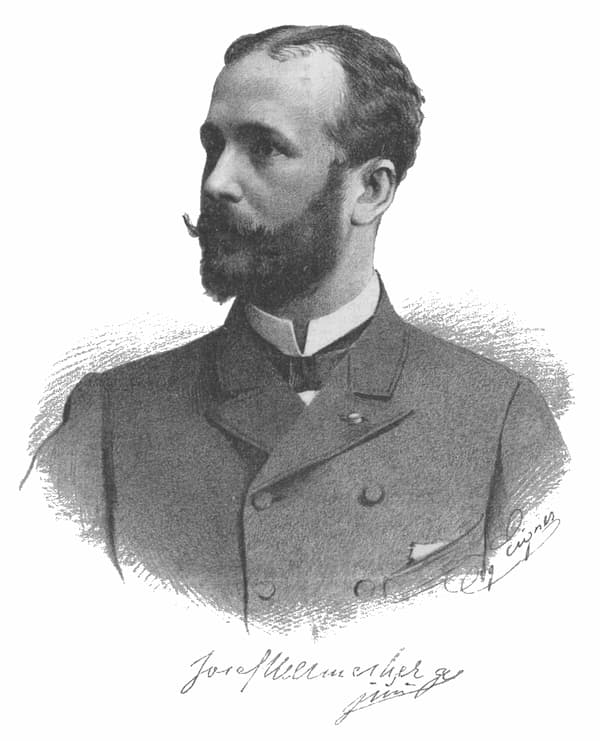
Josef Hellmesberger Jr. © Wikipedia
While the music of the Strauss family tends to dominate the programme at the Vienna New Year’s concert, some contemporaries also have an occasional say. In 2025, it is the turn of the Austrian violinist, composer, and conductor Josef Hellmesberger Jr. (1855–1907). He was famous for his virtuoso playing, and he served as a violin professor at the Vienna Conservatory and conducted the Vienna Court Opera.
Hellmesberger Jr. composed his operetta Das Veilchenmädchen (The Violet Girl) in 1896. It is a light-hearted romantic comedy, featuring a young woman, who disguised as a girl selling violet flowers, gets caught up in a series of amusing and tender romantic entanglements.
The operetta showcases the typical features of the genre, namely catchy melodies, lively rhythms, and plenty of humorous situations. Hellmesberger’s music blends the Viennese operetta style with the theatrical charm and wit of 19th-century Vienna. For the march of the “Faithful Brothers,” Hellmesberger wrote some of his most brilliant melodies, providing listeners with a delightful and entertaining experience.
Constanze Geiger: “Un instant de bonheur!”
Constanze Geiger
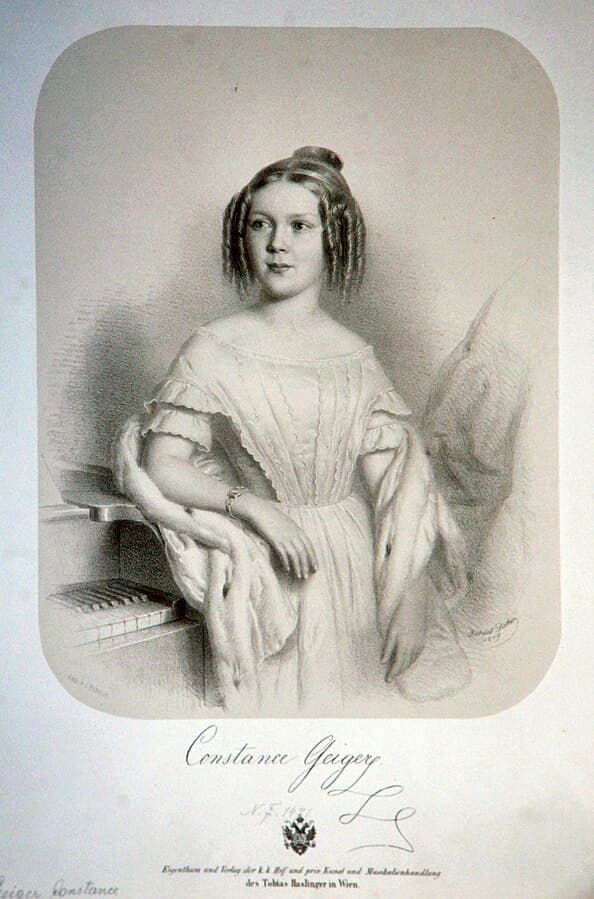
Constanze Geiger
The 2025 Vienna Philharmonic’s New Year’s Concert will feature an actual World Premiere! And what is more, it will also mark the first work by a woman composer to be featured at this prestigious event. Constanze Geiger (1835-1890) was born into a highly musical family as her father, Joseph, was a notable opera composer.
Geiger showed prodigious talent from an early age, and being trained by respected teachers, she started performing as a concert pianist at the age of six. By age 13, Geiger started on her stage career by making frequent guest appearances. She eventually married Prince Leopold of Saxe-Coburg, which made her a baroness.
She retired from public performances after her marriage but continued to compose chamber and church music. She also composed a celebratory piece for the arrival of Duchess Elisabeth of Bavaria in 1854, but her “Ferdinandus Waltz” will first sound in 2025. Since it is a World Premiere I can’t provide you with a preview recording, but I am sure it’s a delightful and joyous composition.
Johann Strauss II: “Annen-Polka,” Op. 117
St. Anne Polka
The rivalry between Johann Strauss Sr. (the “father”) and Johann Strauss Jr. (the “son”) is a legendary tale in music history, especially in the world of the Viennese waltz. Both were musical geniuses, shaping the waltz and dance music, but they didn’t always get along. The “First Family of Viennese Music” had plenty of tension, with father and son competing for fame and public love, each trying to outshine the other.
It’s probably no surprise that they both composed a polka for a celebration connected to the feast day of St. Anne. This was certainly a popular occasion for festivities in Vienna at that time. Father Strauss composed his “Annen-Polka” in 1849, while his son introduced his take a few years after his father’s death in 1852.
Junior’s version is rather more sophisticated in terms of orchestration and thematic development. There is a great sense of exuberance and colour in the instrumentation, and Strauss Jr. knew exactly how to use it. Also, his melodic lines are more elaborate, and since he was a master of dance music, it has a more intricate phrasing with often playful contrasts. It quickly became, and still is, a favourite among audiences.
Johann Strauss II: “Tritsch-Tratsch Polka” Op. 214
Chit-Chat Polka
As we are nearing the completion of the 2025 New Year’s Concert, the programming favours lively and highly recognisable pieces. And such is the case with one of the most famous and energetic works by Johann Strauss II. The “Tritsch-Tratsch-Polka,” probably best translated as “gossip polka” or “chit-chat-polka” dates from 1858.
As the name implies, the music provides for a light-hearted and playful atmosphere reminiscent of the kind of idle chatter one frequently overhears in social gatherings. The melody is filled with catchy and repetitive themes, and short, energetic motifs keep the music moving alone.
The opening phrases, both rhythmic and playful, reflect the chattering quality of the music, while the orchestration is once again full of colour and dynamism. And just listen to the prominent use of the brass section, which adds so much cheerfulness and brightness to the music. This polka certainly captures the spirited atmosphere of Viennese society.
Johann Strauss II: “Wein, Weib und Gesang,” Op. 333
Wine, Women, and Song
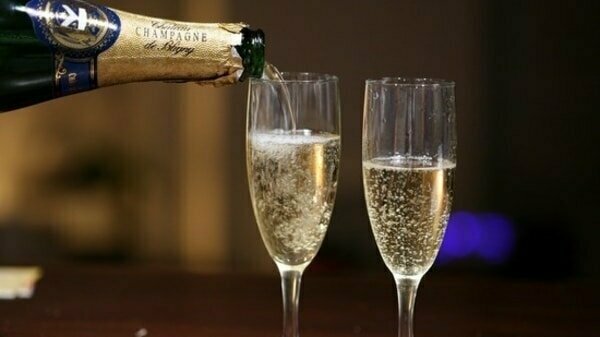
One of Johann Strauss II’s most famous and beloved waltzes, “Wine, Women, and Song”, dates from 1869. It is often celebrated for its charming and buoyant character, and it has become a symbol of the carefree and intoxicating spirit of the Viennese waltz tradition. One thing for sure, the title celebrates the pleasures and joys of social interaction.
The title itself comes from literature and poetry, particularly from Schiller’s poem “Ode to Joy.” Well, we know that poem from a number of different contexts, but in the waltz format, it immerses us in the Viennese ballroom culture. In 19th-century Vienna, social gatherings and dancing were an integral part of the city’s cultural identity.
“Wine, Women, and Song” features the characteristic ¾ rhythm that gives it its flowing and graceful quality. We hear a number of contrasting themes, each capturing the spirit of the title in its lively rhythms and elegant melodies. It represents the carefree ethos of the waltz era, and it is a staple of the Vienna New Year’s Concert.
Radetzky March
Every year, the New Year’s concert of the Vienna Philharmonic Orchestra closes with the “Radetzky March” by Johann Strauss senior. And every year, the conductor conducts the audience in clapping along with it. Just like the opening “March of Freedom,” it dates from the year of the revolution in 1848.
The march was written to honour Field Marshal Joseph Radetzky in celebration of his victory in the “Battle of Custoza.” Radetzky had defeated the forces of the Kingdom of Sardinia during the First Italian War of Independence, and he was celebrated as an Austrian hero.
As you can easily tell, the rhythm is simply infectious, clearly designed to inspire marching or clapping. In terms of orchestration, it is scored for full military band with a prominent role for the brass and percussion sections. Trumpets and trombones play the main theme, while the strings and woodwinds initially provide a supporting role. The “Radetzky March” was an immediate hit, but it has since outgrown its original patriotic context, and it is performed around the world as a symbol of celebration and victory.
We just don’t know what 2025 will bring, but for a couple of hours at the beginning of the new year, we are indeed fortunate to listen to some glorious music from the Vienna New Year’s Concert. I know, it sometimes feels like nostalgia for times long past, but the same music has transcended generations and provided a promise of joy and optimism. It certainly sets a positive tone for the year ahead. Happy 2025!
For more of the best in classical music, sign up for our E-Newsletter

